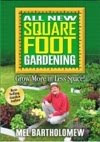As its name suggests, this dough is 100% whole wheat, and it is plain and simple--whole wheat, vital gluten, water, salt and yeast. A nice benefit of baking your own bread is that you know exactly what is in it. I like this dough a lot.
For the compulsory portion of this assignment we were to use this dough to make three variations. Once again, this demonstrates the variety of ways you can use the same dough to make different breads.
First up was a plain and simple loaf. As we know, since these doughs are fairly well hydrated (wet) they can like to spread as they rise. Often I use 1x2s to help contain the dough so that it tends to rise more up than out. Last blog I showed a picture of this with some baguettes and Clarice at Hearth Arts said that I had made my own couche. As far as I know a couche is what I sit on to watch footballe, and I did not make mine, I bought it at the shoppe. Anyway, I wanted this bread to be low and wide, so I formed it that way and let it spread to its heart's content.
I then sliced the loaf horizontally, added some lettuce, some home-smoked chicken breast, some grilled Capicola and a tomato from the garden. It was wonderful.

 I used a Pine- apple tom- ato. Isn't is pretty? If you are interested in heirloom tomatoes you should check out The Heirloom Tomato: From Garden to Table: Recipes, Portraits, and History of the World's Most Beautiful Fruit by Amy Goldman. Not only are the pictures great, but she offers a description of each variety including her assessment of the flavor, its best uses, how well it grows, and its yield. This is particularly helpful since seed catalogs tend to wax eloquent about all their products. Also, re: tomatoes, Cooks Illustrated has concluded that tomatoes store better if stored stem scar down. They noted "that the scar left on the tomato skin where the stem once grew provides both an escape for moisture and an entry point for mold and bacteria. Placing a tomato stem-end down blocks air from entering and moisture from exiting the scar."
I used a Pine- apple tom- ato. Isn't is pretty? If you are interested in heirloom tomatoes you should check out The Heirloom Tomato: From Garden to Table: Recipes, Portraits, and History of the World's Most Beautiful Fruit by Amy Goldman. Not only are the pictures great, but she offers a description of each variety including her assessment of the flavor, its best uses, how well it grows, and its yield. This is particularly helpful since seed catalogs tend to wax eloquent about all their products. Also, re: tomatoes, Cooks Illustrated has concluded that tomatoes store better if stored stem scar down. They noted "that the scar left on the tomato skin where the stem once grew provides both an escape for moisture and an entry point for mold and bacteria. Placing a tomato stem-end down blocks air from entering and moisture from exiting the scar."Back to the issue of controlling dough spread, Ezzie at Brewing & Baking wrote about some of her techniques (and was kind enough to refer to my 1x2 approach). These work fine for baguettes and other long or oval loaves.
Now, as a world premiere, and special lagniappe, or perhaps a mitzvah, for the HB in 5ers, I would like to offer what, in my humble opinion, is THE definitive approach to controlling the spread of a boule. It is definitive for one simple reason--it uses DUCT TAPE!
I wanted to make Mary Ann Esposito's Calabrian Pitta, and I needed a nice tall boule.

 To corral the dough I made a strip of several layers of duct tape and used a paperclip to hold it in a circle of the diameter I wanted. (It is adjustable!)
To corral the dough I made a strip of several layers of duct tape and used a paperclip to hold it in a circle of the diameter I wanted. (It is adjustable!) Then, I lined the form with parchment paper, taking some time to carefully fold and fit the parchment paper so that there were no big wrinkles.
I let the dough rise, removed the duct tape, and used the parchment paper to deposit the loaf, parchment paper and all, into a pre-heated Le Creuset Number 22 pot and baked it at 450 for 15 minutes with the lid on and 15 minutes with the lid off. (Using the pot eliminates the need for a baking stone and water pan.)
I tried this pot while on vacation and liked it much better than my dutch ovens--it was smaller, more suited to the size of the boules, and the handle on the lid made it much easier to remove with pot holders, since the lid was very hot from pre-heating. I found myself an old one on eBay, as you can see from the color. As they say, no gear, no hobby. The bread turned out beautifully, if I do say so myself.

 I holl- owed it out, spread on some of Al’s Giardiniera (Mary Ann's Olive salad would not have played well with some of my peeps) and then layered meats and cheese and another layer of the giardiniera. Then I wrapped it and refrigerated it for several hours.
I holl- owed it out, spread on some of Al’s Giardiniera (Mary Ann's Olive salad would not have played well with some of my peeps) and then layered meats and cheese and another layer of the giardiniera. Then I wrapped it and refrigerated it for several hours.And now, for the big reveal--TA-DA!
My self-congratulatory tangent completed, its back to the second compulsory exercise with the 100% Whole Wheat Bread: Zucchini Flatbread.
OK. They call this a flatbread. But to me if it looks like a pizza, walks like a pizza, swims like a pizza and quacks like a pizza, its a pizza. I pretty much followed the recipe except I added some leftover corn I cut off the cob and I used toasted slivered almonds instead of pine nuts. I also cut back a bit on the Parmigiano-Reggiano. And I used corn meal instead of flour to roll out the crust. I often do this with pizza crust, I saw it on an episode of Diners, Drive-ins and Dives. The corn meal gets worked into the crust and gives it a sturdy, chewy/crunchy texture. Also, since the weather was nice, I cooked it on the grill instead of in the oven. Other than that I followed the recipe exactly.

 I rolled out the dough and threw it directly on the grate to grill the first side. Then I took it off the grill, flipped it grilled side up, topped it, and put it back on the grill to grill the bottom. It was very, very good.
I rolled out the dough and threw it directly on the grate to grill the first side. Then I took it off the grill, flipped it grilled side up, topped it, and put it back on the grill to grill the bottom. It was very, very good.The final compulsory exercise was Msemmen (Algerian Flatbread). Since this did not have toppings, in my world it really was a flatbread not a pizza. If you Google Msemmen (sometimes transliterated as M'semmen) most of the entries characterize it as Moroccan rather than Algerian. The two are Saharan neighbors. It appears that the Moroccan variety is often served with honey, so it is sweet, while the Algerian version is more savory, with spices. Ours is the latter. If you would like to know how to pronounce Msemmen check out this video.
The first step is to make an oil/spice mixture. Sir Isaac Newton said that "If I have been able to see further than others, it is because I have stood on the shoulders of giants." So too, here. In our discussion group Carolyn noted that she found the oil/spice mixture too runny and suggested adding the oil to the spices slowly, until it was spreadable. Standing on her shoulders, that is what I did.


The spice mixture is spread on the rolled out dough. The dough is then rolled up jelly-roll style and coiled around itself. Then it, and you, rest for 5 minutes.


Finally, the "coil" is rolled flat again, and cooked in in some oil in a large frying pan on the stove. This made a very interesting and tasty bread. I would think it would also be good cooked on the grill.
I still had some dough left, so for the freestyle portion of the exercise I made a Capicola Bread.
 I rolled out the dough, put on some Capicola and some mozzarella, rolled it up and let it rise (using my 1x2s).
I rolled out the dough, put on some Capicola and some mozzarella, rolled it up and let it rise (using my 1x2s). 
Then I baked it, sliced it, and ate it (with a little help from my friends).


That concludes this fortnight's adventure. Tune in next time and be sure to check out what everyone else did with these breads at Big Black Dog.

























